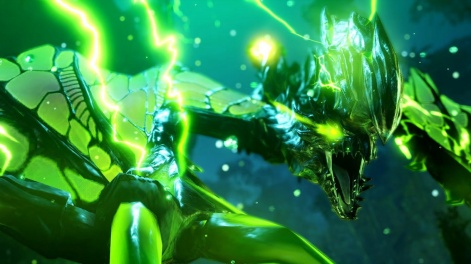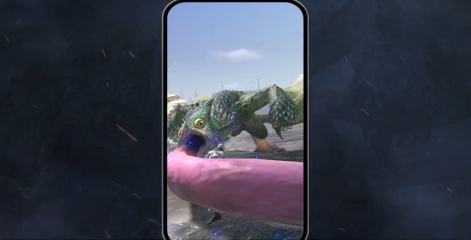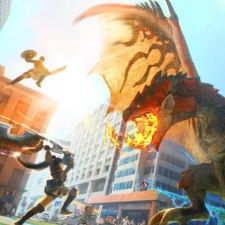After the mega success that is Pokémon Go, from record-breaking revenues at launch to well over $6 billion in its lifetime thus far, Niantic’s spent the past seven years struggling to capture lightning in a bottle for a second time.
The studio most famous for its work in AR has developed a swathe of games using IPs from Pikmin to the NBA, Harry Potter to Transformers. Then there's a Bitcoin game and original IP too, in the shape of Ingress and Peridot. Yet not one could reach anywhere near Pokémon Go’s lofty heights.
Until September 2023 that is, when Niantic released Monster Hunter Now.
Dawn of a new era
Capcom’s Monster Hunter series has grown immensely in popularity over the past two decades, starting out as a franchise played almost exclusively by the Japanese market and developing into a brand recognised around the world, with six main series instalments, spinoffs, over 94 million sales and its own movie.
Exemplifying this growth, 2010’s Monster Hunter Freedom 3 sold fewer than five million copies worldwide, while 2021’s Monster Hunter Rise has sold more than 12 million units globally and was the year’s biggest Nintendo Switch game in Japan.
Part of the franchise’s popularity in Japan in particular can be attributed to its gamers’ penchant for handhelds, which Monster Hunter games have typically released on.
And what handheld device is more prevalent than a mobile phone?

The prospect of Monster Hunter Now, therefore - a Niantic-powered location-based AR game using a globally recognised Japanese IP - echoed with familiarity and oozed with potential. And now almost two months on from launch, the formula of much loved Japanese gaming IP (Capcom's Monster Hunter or Nintendo's Pokémon) plus Niantic's real-world AR gameplay novelty, has indeed proven successful for a second time.
Already, Monster Hunter Now has become Niantic’s second-biggest game with more than 10 million downloads and counting. Three million people pre-registered before launch, and events from Diablos to Pink Rathian to Halloween have kept installs moving in the right direction.
Competition, not saturation
Considering Now’s strong start, GameRefinery has speculated as to whether Niantic has "finally found another Pokémon Go", particularly in Japan where location-based games are more popular. Saying that, gamers in the West are getting out more too.
Pokemon Go generated $206.5 million in its first month, which is still leagues ahead of Monster Hunter Now’s $31.44 in the same timeframe, but GameRefinery believes it has "hit the mark" nonetheless, maintaining a top 100 highest-grossing position on US app stores during launch month. It has since slipped into the top 200 but is remaining stable there, and is still above Niantic’s previous game Peridot which hardly breached the top 200 for any time at all.

The first event featuring Diablos bolstered Now’s revenue by nearly 300%, GameRefinery noted, despite monetisation being surprisingly limited. There are some starter bundles for sale and consumables to restore health, but for the most part it can easily be a free-to-play experience. Even so, players are clearly choosing to spend.
Stunningly, Diandian’s data has found that only 14.32% of Now’s downloads actually come from Japanese players, but that modest fraction of gamers contributed a staggering 68.66% of the game’s first-month revenue.
Now also has more competition in the genre than Pokémon Go did on release, making its launch revenues that much more impressive; between Go, Now, Dragon Quest Walk and Nobunaga’s Ambition: Departure, there are plenty of location-based games to choose from today. Sensor Tower believes Now could surpass Go, but that the market has become increasingly competitive.
GameRefinery, meanwhile, believes these titles are able to coexist - finding popularity in different types of player: "These titles are able to coexist because they each cater to wildly different audiences and their motivations through their unique gameplay.
"For example, Monster Hunter Now’s mixture of skill-based gameplay and epic monster battles appeals to thrill-seeking players. Pokémon Go and its expansive library of hundreds of rare creatures stand out to treasure hunters. Pikmin Bloom, meanwhile, is relaxing and therapeutic, with players collecting seeds to grow new friends; this appeals to thinkers who want to take their minds off the outside world."
The genre is only continuing to grow with a new geolocation Kingdom Hearts game on the way, and how Monster Hunter Now will fare in the long run is still up for debate. Niantic’s Harry Potter: Wizards Unite saw a strong launch but couldn’t sustain it, ultimately shutting down two years later. But Monster Hunter Now is sticking true to its source material, and as long as Niantic can keep players motivated, the potential remains to make Now one of mobile’s giants.





















